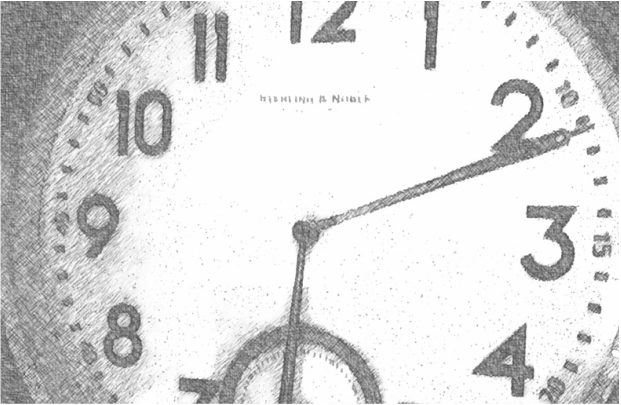|
This is the third post in the series about training your team. This actually could be a stand alone post. When it comes to training tell your team “Why” you are training. Telling them “Why” is actually the training. Instead of more rules, create guide rails. Let your team know where the goal posts are and let them decide how to score. So much has been written and said about "Why" yet it is still one of the most ignored subjects within organizations. "He who has a why can bear almost any how” Friedrich Nietzsche In many organizations whenever there is an issue the solution is to add another rule. This seems to make sense right? What if we did it different, what if we shared our “Why”? Would sharing it allow our teams to perform better in more situations?…Would they feel better in situations if they could use our “Why” as a compass to navigate? Think about that. Does your team perform their work under supervision ? Do they perform their work offsite? We live in a post industrial revolution world. The days of prescribing every little action to be taken by your team are over. We cannot possible legislate every situation they will run in to. The world is moving too fast. How can you be sure that they will perform work in alignment with your desires if they run into a situation that they are not perfectly prepared for? The only choice is to share the "Why". If they know your Mission, Vision and Values, you can be assured whatever action they choose will be directionally correct. The customer will be taken care of and situations will be resolved sooner. Faster resolution performed correctly is usually more cost effective. Employees feel empowered and more engaged. Customers will feel taken care of. “If you want to build a ship, don’t drum up the men to gather wood, divide the work and give the orders. Instead, teach them to yearn for the endless sea.” Antoine de Saint Expury. This may be the challenge to execute on “Why”. You may have to evaluate the way YOU think. What do you believe about leadership or management? Do you believe you have to do all the thinking and layout a tightly prescribed and narrow set of rules; or do you fundamentally believe that people will rise to the level of expectation you set? How do you set expectation? What is your ability to communicate your “Why”? Think about it. Who would you want to work for? Someone that doesn’t share the directive; Who doesn't tap into your deeper abilities? Or someone that treats you as the adult you are and holds you accountable for the opportunity and direction given? “You can buy a person's hand, but you can't buy his heart. His heart is where his enthusiasm, his loyalty is. You can buy his back, but you can't buy his brain. That's where his creativity is, his ingenuity, his resourcefulness.” ― Stephen R. Covey, The 7 Habits of Highly Effective People Create a training program built around helping your team understand and live your values, and the rest will take care of itself. Today, what the world needs is more heart in the marketplace. Leaders have to start. Employees need to know they are valued. That the places of work is a safe place to engage. Your customers wants your teams heart to be in their work… If you want your teams hearts…they need to know your “Why”.
0 Comments
In the last post we looked at what training should be.
In this post I will focus on Agenda and structure. I saw a t-shirt once that said I survived another meeting that should have been an email. I am going to get it I think. But how can we avoid death by meeting. It should go without saying, if you don’t have a compelling agenda cancel the meeting, people will love the free time that just opened up in the schedule. More will get done. This is a good time to ask yourself “does this really need to be a meeting?” Don’t just hold your meeting because its Thursday morning and that is what we do. If you do think you need the meeting, how long should it be? A lot of meetings are in half hour increments, ever wonder why. Technology is great and we do need to be efficient so we go with our scheduling defaults form outlook etc, half hour or hour long increments. This is fine except I see people “padding” agendas to “fill out the time” Instead of this habit, take a look at what you want to get accomplished and determine the correct length. See previous link about ROI here. Many people create an agenda but their main focus for the meeting is to cover everything on the Agenda. This is incorrect thinking, we need to take each item one at a time, and not move on until we are sure everyone in the room knows what we are looking for and why. This last part is so important. If you have ten items to cover on an agenda, it is more beneficial and efficient if you only cover the first few items but you cover them thoroughly, than to cruise through and say “we covered all of it”. You will end up having to bring everyone back in and you have not really saved the time you thought you had. It is preferable to over communicate the first time round and then “check in” with the team. This is simple but profound. When you have covered an item and you think you are done say this sentence “OK what do you think we just discussed?” When you get an answer, pick another attendee in the room and ask “Do you agree, is that what we are doing?” This creates dialogue and drives home impact, covers repetition for learning and allows the group to hear peers repeating the message. Next post we will share the power why… |
Authorthese are just the thoughts of someone who used to know more but now knows less... This website uses marketing and tracking technologies. Opting out of this will opt you out of all cookies, except for those needed to run the website. Note that some products may not work as well without tracking cookies. Opt Out of CookiesCategoriesArchives
June 2023
I would love to hear from you on your thoughts and feedback... |




 RSS Feed
RSS Feed